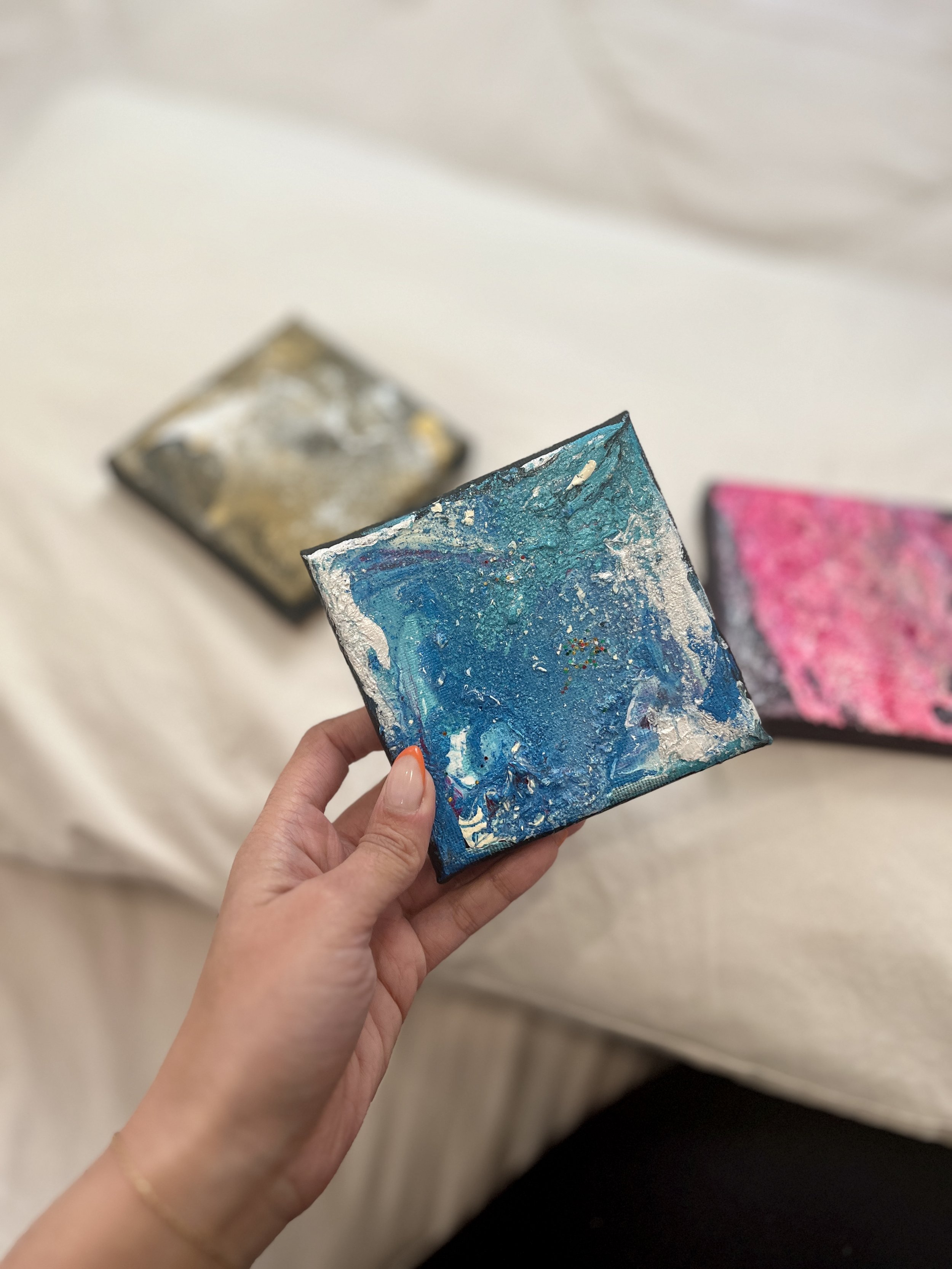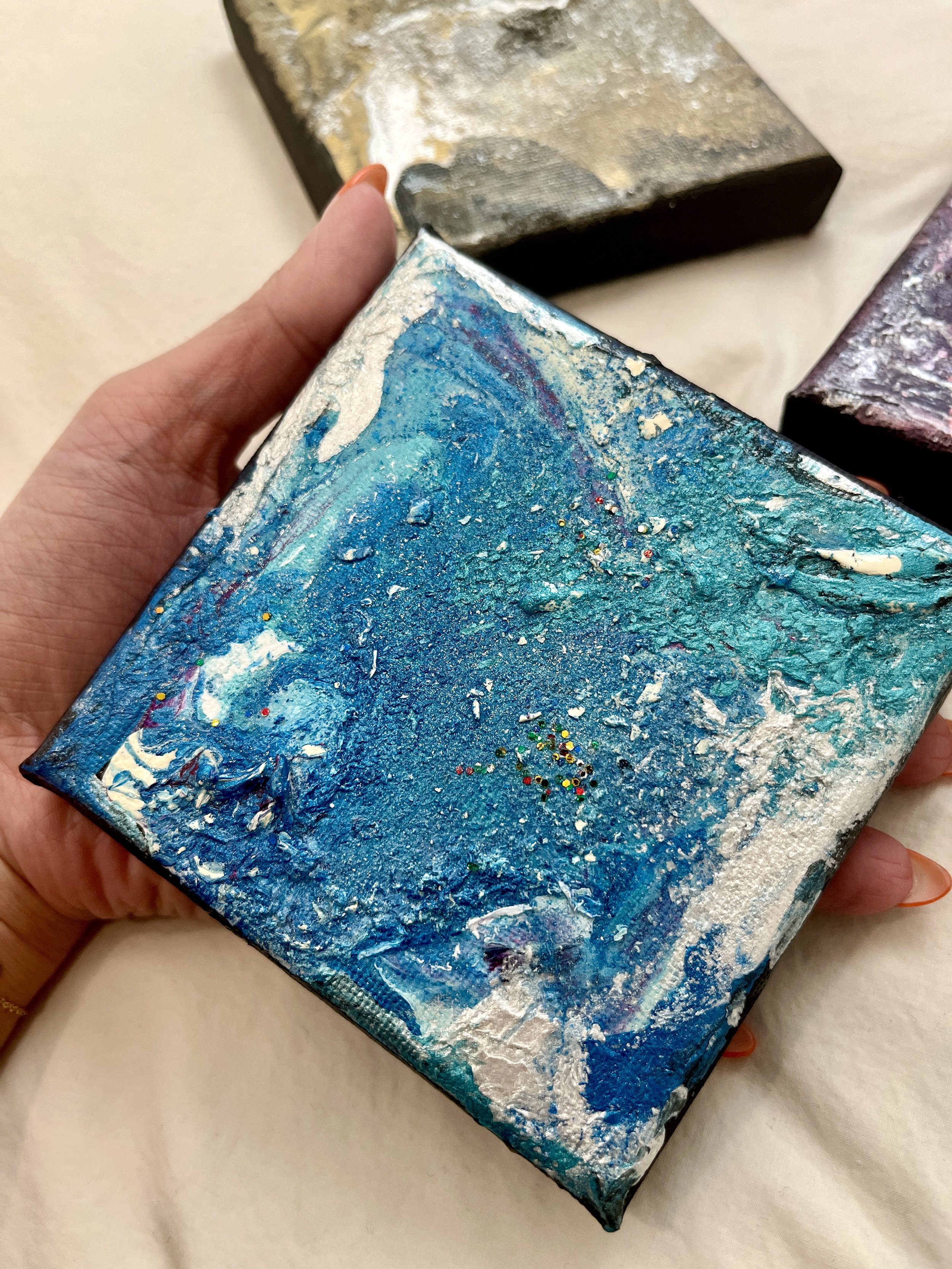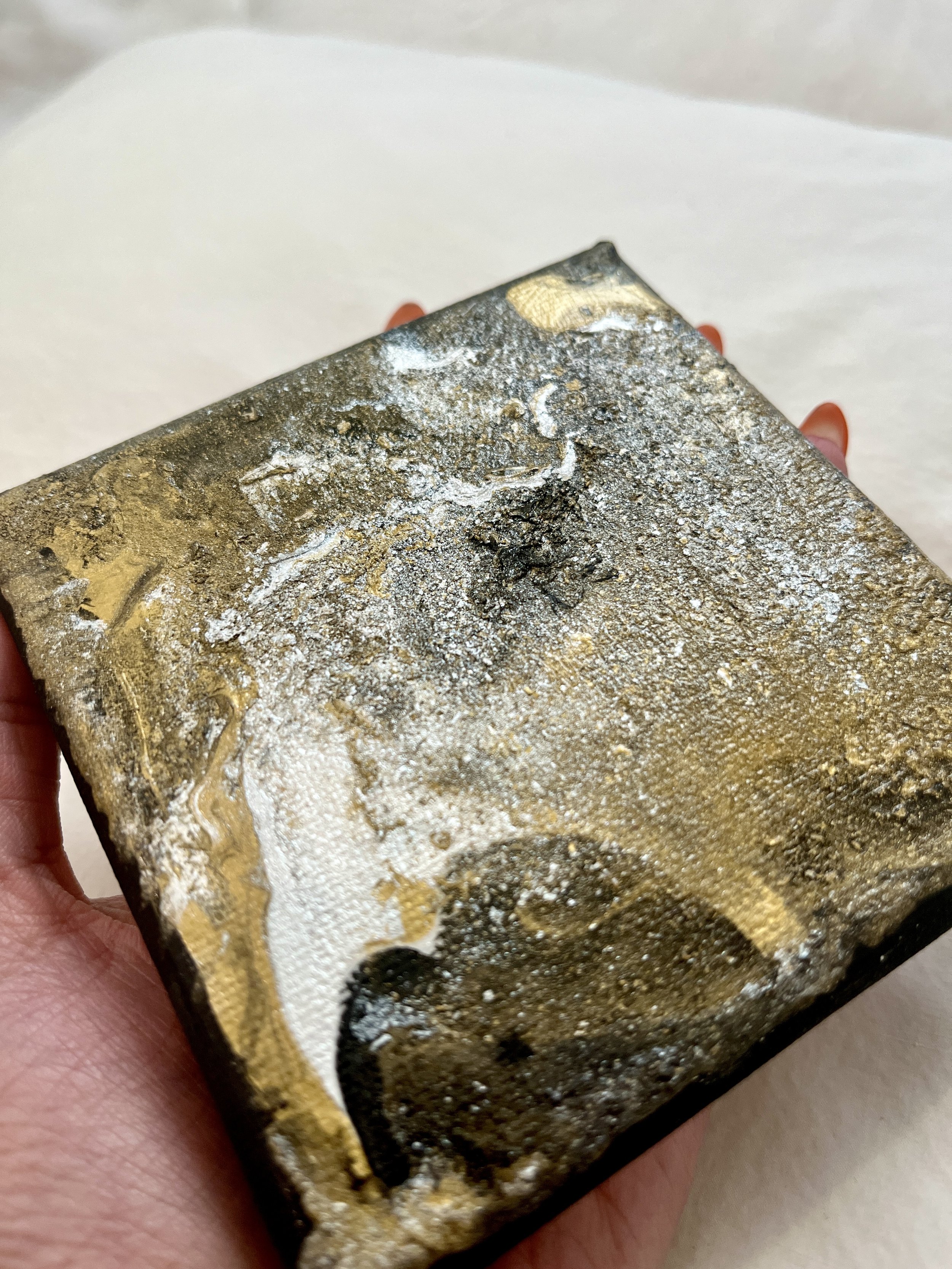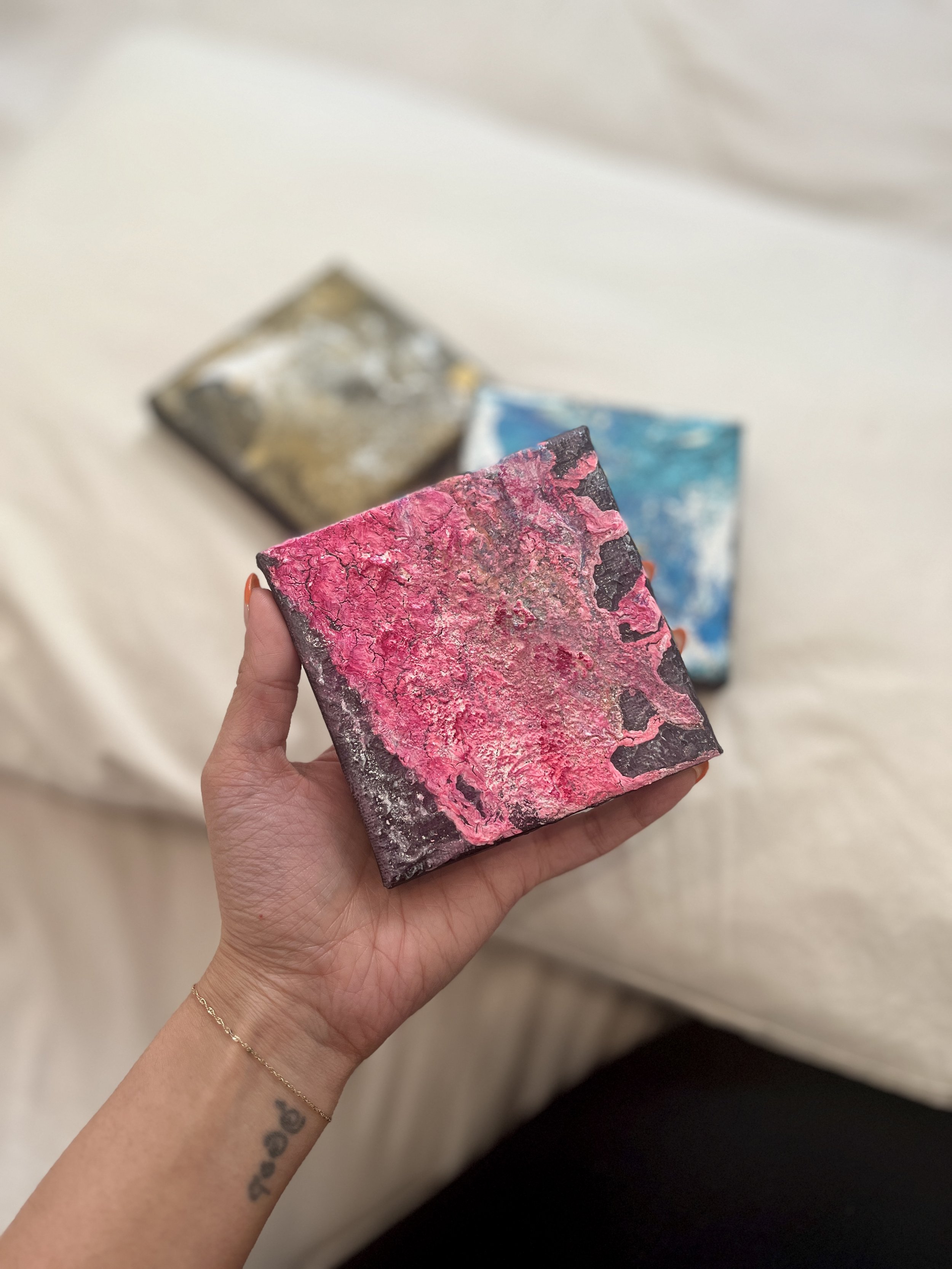Acrylic pouring on (tiny) canvases
I jumped back into painting because I wanted a hands-on outlet for my creativity. A place to ‘play’. When I was younger, I was drawn to specific styles – I've raved about artists like Robert Rauschenberg, Jackson Pollock, and Damien Hirst. Their techniques fascinated me, and I couldn't resist perfecting them myself. As a result, a lot of my work is rooted in these techniques. Like my 2023 series, I kept circling back to the same old style. Don't get me wrong, I love it and it makes me happy, but this year, I felt the itch to shake things up. I wanted to challenge myself with a technique I'd never tried before. Something completely new! This way, every stroke becomes more intentional, and I get to pick up new tricks along the way.
Acrylic pouring painting involves the technique of using fluid acrylics poured onto a canvas (or any other surface), resulting in insane, unique abstract effects. Like a different kaleidoscope on every pour basically. The process itself is nothing short of mesmerizing and can quickly become an addictive, immersive experience. I think thats why I loved it so much. I thought I’d start small, with three tiny canvases …experimenting with three unique color palettes to get the lay of the land or lay off the ‘pour’. It was so much fun and below are some of the results. The details blow me away and it’s fascinating that even as the painting dries, it takes new forms as the paint mixes and settles.
I love staring at the textures and hope some of that comes accross in the detail shots.
I will say - the hardest part of this set of paintings was the pour mixture. Theres a lot of different techniques out there to get the right consistency but I did use this link and video to guide me.
Here are the two basic mixtures that a lot of folks use:
Liquitex Basics + Liquitex Pouring Medium: Liquitex states on their website that you should use about 5% paint and 95% medium. For example, if you’re using 10 total ounces of paint, you’ll want to use a half ounce of paint, and 9.5 ounces of medium.
Liquitex Basics + Floetrol: You can use three parts Floetrol to one part Liquitex. For example, if you want four total ounces of paint, you’ll use one ounce of paint, and three ounces of medium.
Next time I’ll try another mix to see if anything changes. Enjoy!





